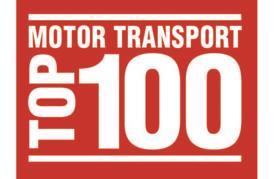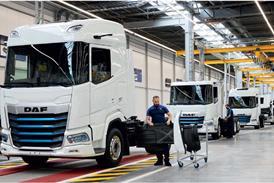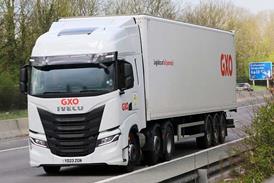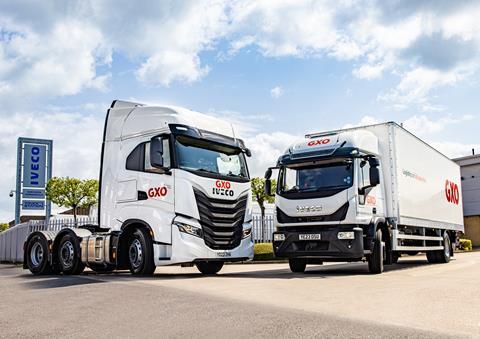
Motor Transport in association with leading 3PL GXO held a webinar in October to discuss the vital issue of how the road transport industry should be handling the recent influx of new drivers to ensure they are properly prepared for life on the road.
Following the much-publicised HGV driver shortage of 2019/20, the industry saw an influx of new and returning drivers thanks to initiatives like the Skills Bootcamps and significantly increased wages.
Drivers need the right skills, and maybe more importantly behaviours, to keep them and other road users safe. Proper inductions and continuous training are required to ensure all drivers, new or more experienced, are familiar with the company’s vehicles, operations and processes – the days of ‘here are the keys, mate, away you go’ must be consigned to history.
Chris Hyde, MD, food and drinks at GXO, has been with the business for 22 years and he said “one thing I’m really passionate about and really focused on is driver wellbeing and safety. I want to share what we do as an organisation both in terms of behavioural safety and our investment in training.”
GXO won the 2024 Motor Transport Training Award partly because of the work it is doing with its Driver Academy to train up HGV drivers, and for its commitment to colleague safety.
“Be Safe is the way in which we at GXO focus on our colleagues’ safety and wellbeing as our number one value,” said Hyde. “We have a philosophy at GXO of a Road to Zero accident culture where we believe every accident is preventable. We’ve invested heavily in trying to get us where we need to be.”
GXO uses a number of tools and techniques to achieve this goal, one of which is psychological safety.
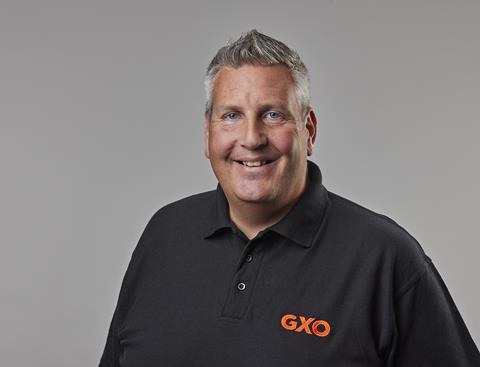
“We’ve rolled out a programme across the organisation around behavioural safety,” Hyde said. “There’s an influencing factor within whatever happens on the road, in the depot, in the yard, at a debrief desk. How do we influence that state of mind, giving the right tools and techniques to allow the drivers to think a little bit differently when they’re faced with a problem?
“We do job swaps where a driver will spend time with the planning team and vice versa. That way, when a driver rings in to say there’s a problem, the traffic office has a wider appreciation of what that problem might be and how they can support them.”
GXO has invested in a vehicle simulator to allow team members to experience the life of a driver without physically going out on the road.
The traffic office team is also in the best position to know is a driver is in need of support.
“If I go back to my time when I started off as a night supervisor working in a traffic office, I knew when somebody turned up at 3am if they weren’t feeling right because you get to know your drivers,” said Hyde. “Improving that engagement and decision-making helps to create a more motivated and collaborative environment where drivers feel more confident to engage.
“You’ve got to get that balance right and show you care from a welfare and compliance perspective.”
“We’ve got some leading-edge tools that really enhance driver safety. Bolt that together with a programme of Be Safe, a focus on Road to Zero, a culture of behavioural safety, and we think we’ve got a winning formula.”
Since the roll-out of GXO’s Road to Zero, it has seen a 54% reduction in lost-time incidents.
In the years following the Covid-19 pandemic, the transport industry saw an influx of new and returning HGV drivers, and they needed extra attention to help them settle into their roles.
“When we got back up and running, the industry reacted in a number of ways,” said Hyde. “We saw wage increases, different apprenticeships, government funding, licence acquisitions. The output of that was a significant increase in newly-qualified drivers.
“They need that additional support. How do you make sure newly-qualified drivers feel safe and comfortable in the environment they’re going to be working in?”
GXO approached the issue in two different ways.
“The first was through our Driver CPC scheme. We took the decision to not only set up a driving school, but also develop an award-winning Driver CPC aimed at all newly-qualified drivers as well as experienced drivers.
“It’s all about giving the drivers the tools and techniques to support them when faced with difficulties out on the road, be it a difficult delivery point, tachographs and driving hours, parking, uncoupling/coupling vehicles, etc.
“Since launching three years ago, we’ve had over 3,000 drivers go through this DCPC module, and we’ve had 98% positive feedback. It’s focused on behavioural safety and to say if something’s not quite right, don’t be afraid to put your hand up.”
The second response was to create was the GXO Driver Academy to put candidates through their LGV test.
“We used our training department, GXO University, to create a 12-week course giving colleagues with a car licence the opportunity to acquire a Category C+E license.
“We believe it’s leading edge. The most positive thing is the support and the network that we provide to our colleagues, in terms of the qualification period, during the process, and then post-acquisition. Because once you give a driver a licence, we are still committed to supporting that driver through their career with GXO.
“We’ve worked collaboratively with our operational teams to really get a harmonised solution where we acknowledge that a newly-qualified driver might need that little bit extra support and guidance. We created a buddying system, where once a driver has qualified and they go into our operations, the operational teams support that driver through buddying, regular reviews and making sure that the driver is comfortable with the tools and techniques they’re using.”
The Academy has an 80% first-time pass rate, compared with a national average of 54%, while retention rates after three years are 97%.
Within GXO’s Driver of the Year Awards the company has created a Newly Qualified Driver of the Year category. “We’re recognising not just our experienced drivers, but also our newly-qualified drivers and how we can support, enhance and celebrate the success of some of our colleagues,” said Hyde. “I’m very privileged to be in a role where I work with such amazing teams. I’ve been in transport now for 30 years and there’s not many roles that I’ve not done. I’m very lucky to work within GXO and to have such an amazing team that enables us to deliver great customer service.”
Mark Callow is fleet services and compliance director Europe at GXO. He passed his Class 1 in the 1980s and said “driver safety is really close to my heart”.
“I understand the difficulties that the drivers face,” he went on. “Sometimes the public has a lack of understanding about how difficult it is to navigate the streets of our cities with these big vehicles. They don’t appreciate that the driver cannot see them in their blind spots.
“Technology is moving on and the OEMs are now fitting technology that will help with that. We need to give drivers all the tools we possibly can to help protect themselves and the general public.”
Modern vehicle technology such as telematics and cameras can be a double-edged sword in that drivers can feel their every move is being watched – but it can also offer genuine safety and welfare benefits if used correctly.
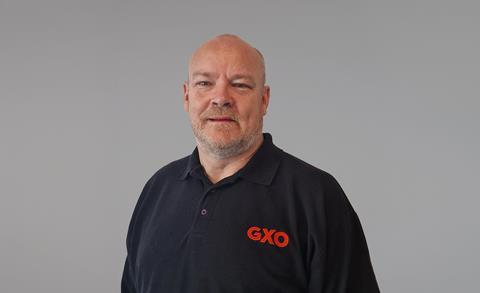
GXO has a catalogue of over 100 safety options that can be selected to build the optimum equipment , ensuring customer and contract fit within the operating environment and overall safety parameters. These include forward-facing camera systems, EN 12642-XL spec load security, trailer telematics including BPMS, vehicle and trailer rollaway prevention, dynamic routeing (including asset weights and dimensions) and AI blind spot cameras.
“Every single vehicle in our fleet is fitted with forward-facing cameras, even on all the rental equipment,” said Callow. “It gives the driver the certainty that if they don’t do anything wrong, that camera’s there to protect their licence and their livelihood.
“We’ve operated DVS-1 camera systems since their introduction, and they are now being upgraded to DVS-2 as required for London. Since 2012 we’ve fitted warning signs to alert vulnerable users to the dangers of LGVs turning left given the blind spot areas for drivers. Over and above this we have fitted warning lamps with voice audible warnings for pedestrians and cyclists that the vehicle is turning left.
“Another must is the EN-XL rated body structure and curtains that have passed testing standards and received certification. Even then EN-XL rating is only good as long as you’ve a positive fit with no greater space than 150mm at the rear doors and 80mm on the side curtains. Failing that, you need to secure your load from rave to rave with strapping systems whether they be retractable or standard straps.
“We’ve had TrailerMaster since 2016 to give us real-time tracking and an onboard electronic brake performance monitoring system. Dynamic payload information from the suspension air bags and a deceleration sensor coupled with service line brake pressures all send information to the ECU to calculate service brake performance through algorithms, providing a service brake performance reading. This is now eligible to replace a brake roller test, reducing our carbon footprint as we no longer have to attend workshops just one test. We adopted the system year before DVSA approved it as a credible form of testing brake performance.
“Anti-rollaway is really close to my heart because I experienced one on an artic many years ago. Since 2018 we have fitted a system that interfaces with the air brake. If the driver’s door is open, if the handbrake is off, it will give a warning and also apply the vehicle brakes.
“DriveSafe is a navigation system that provides live traffic data so if there are any problems on the road it offers drivers a safe route for that class of vehicle. We trialled it for three years and eight million kilometres before we rolled it out across our fleet. We also use Microlise systems across elements of the fleet.
“We’ve been fitting AI cameras to a much of our fleet this year, and not just in line with London Direct Vision Standard requirements. They warn the driver of a cyclist coming down the nearside or pedestrians moving towards the vehicle. The cameras recognise people or animals and no longer trigger false alerts from inanimate objects like lampposts, railings or bins.
Combining a robust people culture and the latest technology sets a great example for the rest of the industry, one that chimes with the ethos of the Road Haulage Association (RHA).
Paul Allera, technical director at the RHA, has been in the industry for almost 50 years and was involved in driver training in the 1980s as an operator.
“The importance of good driver training cannot be over-stated,” he said. “The transport sector were all heroes during Covid. As far as I’m concerned, we’ve always been heroes.
“That’s where HGV drivers are crucial to ensuring that we get that efficient movement of goods across the country. The biggest thing is getting that attraction of the transport industry across to people so they want to join us, to make them want to join companies like GXO that are going to invest and develop them, and also to help retain them there.”
Allera pointed that technology can only go so far and proper driver training remains essential to a safe operation.
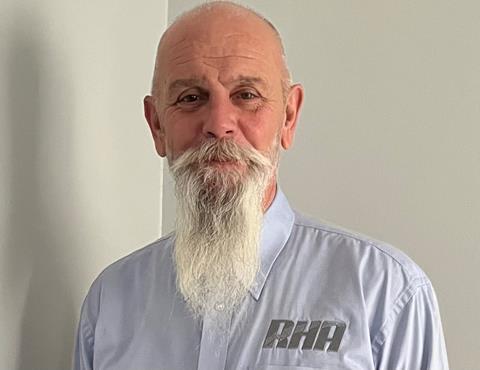
“Proper training reduces the risk of any accidents – it’s been proven,” he said. “It’s alright having all the cameras, and cameras are great, but sometimes all cameras will do is apportion blame.
“We’ve got to ensure that the drivers are fully equipped to handle their load, and understand the road rules and react in various situations.”
While vulnerable road users (VRU) are often regarded as cyclists and pedestrians, Allera contended that a VRU is any road user smaller than the vehicle being driven.
He went on to say that the UK has “very strict licensing requirements”.
“We’ve been saying for many years that we’re the most legislated sector in all the UK, and it just keeps coming and coming,” he said. “The drivers need to understand some of these because it’s part and parcel of their daily duties. When you’re looking at the Vehicle Lighting Regulations 1989, you’ve got to tell the driver why he needs to defect that vehicle because the bulb isn’t working.
“Drivers need to understand about what weights they’re carrying. They can’t turn up and have any load put on their vehicle.”
On top of compliance with regulations, today’s drivers need more technical skills to handle and load modern vehicles safely and efficiently.
“Gone are the days when vehicles all were the same and they didn’t have all this technology on,” said Allera. “You probably could jump from one vehicle to another in the old days. Now it’s about a great vehicle handover and explaining what everything does on there.”
And while modern trucks have lots of driver aids like automatic emergency braking, today’s congested roads require even more driver skills.
“Training should emphasise defensive driving techniques to help drivers anticipate and respond to potential hazards,” said Allera. “That’s all about your spatial awareness, and matching your speed to the environment. Expect the unexpected because you never, ever know what’s going to happen.
“I would like to think 90% of drivers make allowances for other people’s mistakes and errors. I’m on the driver’s side here.”
Training drivers should not just be regarded as a cost but an investment that will be repaid in better efficiency and productivity as well as safety.
“If you’ve got drivers who are engaged because you invest in them, they’re going to repay you in the way that they behave out on the road,” said Allera. “If they find a fault, they will say ‘I’ll get it repaired straightaway. I won’t leave it because that might result in a breakdown, which means I’m going to be late’.
“And if they’re driving correctly, they are getting a better result on MPG, less likely incidents leading to less insurance claims which can potentially reduce your insurance premiums. And you’re not getting those transit claims for damaged goods.
“Every single driver that leaves your location is an ambassador for your company. If you’re not engaging with your drivers and developing them, it’s not going to be good for brand representation.”
Better driver engagement also has another vital spin-off – improved driver well-being.
“We all want healthy drivers,” said Allera. “It is a stressful job without a doubt because pressures are put onto them, not on purpose, but it’s about the supply chain demands that are put onto the operators themselves.
“That pressure is on drivers because they have got to get there on time. It is stressful and the hours are long.
“I think that it helps if drivers know they can go and have a chat and they have somebody to support them. You’ll always get the positive guys that you can go to, that will go that extra mile for you. We have to be wary that we don’t break those people who are doing those extra miles for you.”
- The webinar is available to watch on demand










